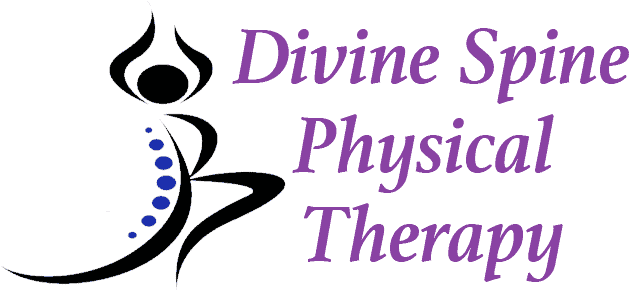Physical Therapy Can Help Relieve Your Pain in These 3 Ways – Without the Use of Opioids
Did You Know PT Could Be Used as a Natural Alternative to Drugs?
Does the prospect of taking painkilling drugs for the rest of your life fill you with concern? If it doesn’t, then it should – especially if the drugs in question are opioids. Many chronic pain sufferers who can’t get the relief they need from NSAIDs or steroids feel that they have no choice but to turn to the more powerful opioid drugs.
Unfortunately, opioids can present some major problems, from mind-addling intoxication to addiction, and the possibility of a fatal overdose. That’s why you should consider the natural pain-relieving power of physical therapy as a safer, more beneficial alternative.
Physical therapy can help you govern your pain without drugs, giving you a chance to break away from your reliance on opioids.
Here are three ways that our physical therapist can use this form of care to keep your pain at bay:
1. Easing your joint motion
If you have crippling osteoarthritis in your knees or hips, you might be shocked to hear a physical therapist recommend that you take up walking. But walking can indeed help reduce chronic joint pain and help arthritic joints move more freely. If you’re not ready for walking, you may benefit from swimming or other aquatic exercises in which the water supports your body.
Heat therapy, laser therapy, and massage therapy are also known to help inflamed joints feel and move better. Strengthening exercises can help take the burden off of your joint’s bones and cartilage by allowing the surrounding muscles and connective tissues to do more of the work.
2. Reducing stress on your muscles and nerves
When your body cannot maintain its natural balance, support and symmetry, chronic pain conditions are sure to follow. That’s because your spinal column requires adequate support from major muscle groups to maintain healthy posture and musculoskeletal alignment.
Weakened, tight, or damaged muscles aren’t up to the job, so they tire easily and develop chronic strain. The resulting postural imbalances can then lead to other painful issues, from herniated discs to pinched nerves.
Physical therapy can quite literally straighten these problems out. Our physical therapist may prescribe exercises to strengthen your back and neck muscles, lending your spine that much-needed support and easing the strain on those tissues.
Improvements in your posture can help take the pressure off of nerves, relieving neurological pain. We may even recommend treatments such as chiropractic adjustment to correct spinal imbalances, thus removing painful stress on your body.
3. Managing and decreasing inflammation
Many kinds of chronic pain are inflammatory in nature or origin. Inflammation occurs as part of your immune system’s natural response to disease or injury. Certain white blood cells and proteins trigger inflammatory processes even as they’re fighting to help protect tissues.
But your body also has a process for suppressing production of these substances. It’s called sympatho adrenergic activation — and physical therapy exercises can trigger it. Research shows that a moderate exercise routine can prompt the sympathetic nervous system to reign in those inflammatory processes that cause pain and swelling.
Physical therapy can also help your body get rid of accumulated inflammatory substances by boosting your circulation. Massage, heat, cold, and laser therapy all increase blood flow to inflamed tissues. This allows the tissues to expel toxins that cause or worsen your inflammation.
PT over opioids – knowing the risks
It is important to note that opioids and over-the-counter drugs are very different. When people turn to over-the-counter medications to help ease pain, there aren’t many significant health risks. For the most part, Advil, Tylenol, and Ibuprofen are safe to use in moderation if you are trying to find immediate relief when recovering from your car accident.
But with severe pain, from a more serious injury you may have sustained during the accident, prescription-strength medications may be issued. However, with severe pain comes severe medication, as well. Opioids are the most commonly used medication for pain management across the United States. Even though they are commonplace, they contain some shockingly harmful facts:
- Opioids are a highly addictive substance and are the most commonly abused prescription medication.
- Opioids are a highly dangerous class of substances. Heroin is among the opioid category, as well as prescription pain relievers like oxycodone, hydrocodone, morphine, and more.
- More than 2 million people in the United States become addicted to pain medication every year, many of the medications being opioids.
- About a quarter of heroin addicts began their addiction through prescription opioid dependency.
These facts, while disturbing, cannot be ignored. They paint a bleak picture regarding prescription pain medication use across the United States, to the point where experts believe it has become an epidemic.
You don’t need to have a history of addiction to become dependent on opioids – in fact, many people who become addicted have never had any issues with drug dependency in the past. Fortunately, physical therapy can help provide the same pain relief in a much safer, healthier, and natural way.
Ready to find long-term relief without drugs? Contact us today!
Opioids and other painkilling drugs have their place in medicine, but you don’t have to rely on them as your only weapons against chronic pain.
Ask our physical therapist at Divine Spine Physical Therapy about how a physical therapy program could hold the natural solutions you need!
Sources:
- https://www.apta.org/PTinMotion/2018/10/Feature/Opioid/
- https://www.webmd.com/back-pain/qa/how-can-exercise-and-physical-therapy-treat-inflammatory-back-pain-
- https://www.medicalnewstoday.com/articles/315255.php#2
